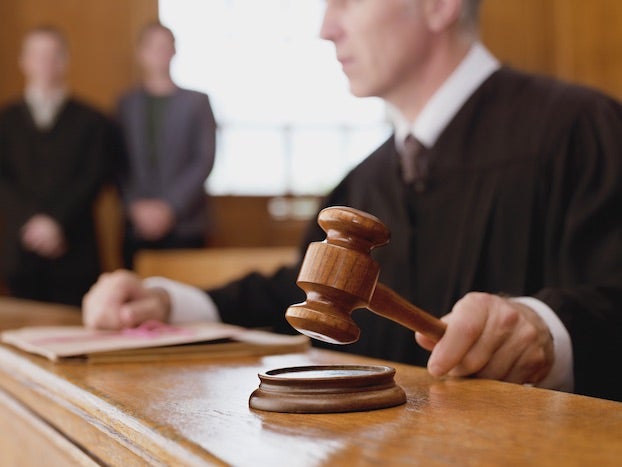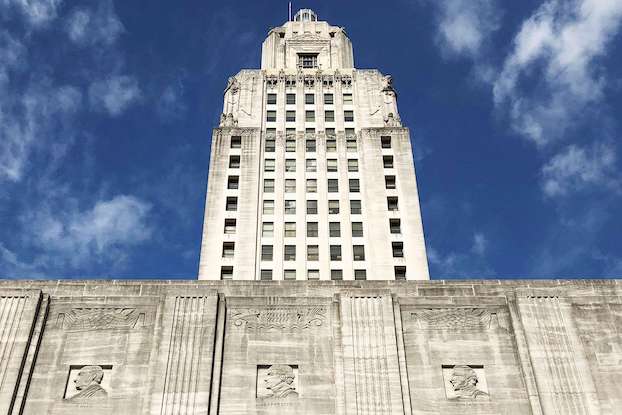Convention delegates drew, argued over lines
Published 6:46 pm Sunday, December 24, 2017
Editor’s note: Andrew Perzo is on vacation. The following is the last installment of a four-part answer to a question on when the boundary of Calcasieu Parish was drawn and why it juts northward to include DeQuincy. It first ran in 2012.
Divisionists had for a decade or so unsuccessfully sought the partitioning of Calcasieu Parish at each regular legislative session, then held every two years.
But in 1910, Gov. Jared Sanders signed into law three bills that would quarter Calcasieu and create a trio of new parishes — Allen, Beauregard and Jefferson Davis — if voters approved in that year’s November election.
Despite divisionists’ claims of widespread support within Calcasieu, the sectioning plan — with boundaries similar to today’s — lost by 2,000 votes. Undaunted, the divisionists turned to the courts in an effort to nullify the election.
“That technicality upon which the last-ditch divisionists are basing their hopes is that provision of law which requires all the purposes of an act to be expressed in its title,” the Lake Charles Daily American-Press quoted a local attorney as saying in its Dec. 30, 1910, edition.
“In the acts provisionally creating the parishes of Allen, Beauregard and Jeff Davis, the requirement for a referendum vote is embraced in the last section, but the referendum is not referred to in the title of the act.”
Convention call
The division partisans wanted the courts to invalidate the last sections of each law, allowing the parishes’ creation to stand by force of the remaining provisions. The case eventually made its way to the state Supreme Court, which ruled in February 1912 that the election results would stand.
But by then both sides had already been at work on a compromise, which began to take shape in mid-1911 with the formulation of two competing plans — one to create two new parishes and one to create three.
The first plan, formulated by a group of businessmen, envisioned a new parish to the north and one to the east. The second plan, created by Sen. R.H. Odom of Kinder, was “practically the same that the people of Calcasieu voted down last fall,” according to a July 18, 1911, American-Press story.
Odom traveled the parish throughout the latter half of the year and gained support for his plan. But efforts to resolve the problem didn’t make headway until the following spring as the Legislature prepared to convene.
On April 17, 1912, a committee of 11 divisionists met in the Calcasieu National Bank in Lake Charles with delegates from the parish cities and towns to discuss the idea of holding a convention to hash out boundaries. Later that day, Sen. Aladin Vincent, Rep. Leon Locke and Rep. Frank Powell issued a call for a convention, which would involve 118 delegates — one for each precinct and one for every 100 voters.
“We feel that it is the democratic way of doing the thing, letting every section by popular appointment have a delegate who will know what his section wants, and then we may be able at the parish mass meeting to get together on equitable lines,” one of the lawmakers told the American-Press.
‘Big division fest’
In an editorial the next day titled “A Sensible Plan At Last” the newspaper wholeheartedly endorsed the idea, saying that “after years of embittered agitation, the first step toward a sane, orderly and equitable division of Calcasieu parish was taken yesterday.”
On May 3, the day before the convention, American-Press headlines referred to the gathering as the “big division fest” and reported “Caucuses in Every Hotel and on Every Street Corner and Unprecedented Rush for Parish Maps.”
The accompanying story noted — with the gleeful journalistic tone characteristic of the time — the differences among the various factions.
“Sulphur and Vinton seem as brothers in the fight the western delegates are waging for a parish over there, and they are not saying a word about the prospective parish seat for the proposed parish. …,” the story read.
“The Jennings people want Elton in their proposed parish, while Kinder thinks otherwise and wants Elton to be with her. The Jennings people think the Odom plan pretty good except that they would be willing to leave Welsh in Calcasieu, and would be satisfied to cut Hayes out, too, if gerrymandering to that extent would be deemed feasible.”
The convention convened the next morning in the Arcade Theater, and initial reports in the American-Press and the Lake Charles Daily Times sang the praises of the delegates for their civilized and harmonious behavior in settling on a division plan, which both papers noted more or less conformed to Odom’s proposal.
But subsequent reports offered interesting glimpses into the debates of the 19-person line-drawing committee, whose boundaries were heartily criticized by the two Welsh representatives, Dr. John Cooper and Lee Robinson.
‘People at Topsy’
According to the May 6 edition of the American-Press, Cooper “characterized the lines as ridiculous and absurd. He held up to scorn the different jogs and diversions made at DeQuincey, Hayes, Topsy, and other points.”
Robinson, too, “objected to the funny little box by which DeQuincey was cut off from DeRidder and left in Calcasieu. (This was done by urgent request of DeQuincey.)” Also, he “called attention to the sad gerrymander in the neighborhood of Topsy. ‘I object on behalf of the people of Topsy,’ said Mr. Robinson, ‘for there are people at Topsy,’ he added in a pathetic tone that brought down the house. Later the delegate from Topsy voted for the report.”
Separate bills for each new parish were taken up and passed by the Legislature a month later, and on June 12 Gov. Luther Hall signed them into law, with the division to take effect Jan. 1.
“Now that division is accomplished, what of the future? The separate entities comprising Calcasieu parish now will be just in the same places geographically after the first day of January. They will be bound together by the same railroads, by business relations and all the inter-related interests that hold communities together. …,” read an American-Press editorial printed June 13.
“Each parish has a reasonable certainty of holding onto and developing the territory given it by these bills and each can adopt a definite, progressive policy undisturbed by fears of the future. Insofar as possible let us promote a ‘community of interest’ feeling in the four parishes.”
l
The Informer answers questions from readers each Sunday, Monday and Wednesday. It is researched and written by Andrew Perzo, an American Press staff writer. To ask a question, call 494-4098 and leave voice mail, or email informer@americanpress.com.





